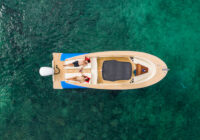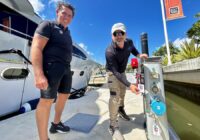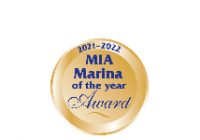Winter whiting fishing
As we head into winter, many recreational fishers are heading out to try and catch winter whiting. If this is you, and you are planning to venture into unprotected waters, make sure you have the correct safety equipment on board.
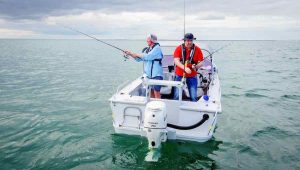
The safety equipment you need depends on the size of your boat and where you are fishing. Remember, you can now order safety equipment checklist stickers for free from the online store.
Before heading out on the water, check the latest weather report for the area via the BOM. When out on the water, watch for signs of approaching bad weather. If the weather changes, consider heading back to shore or finding somewhere safe to shelter.
When venturing more than 3 nautical miles (approximately 5.5 km) from the coastline, you must carry a registered Electronic Positioning Indicating Radio Beacon (EPIRB). This extends to 5 nautical miles (approximately 9.2 km) in Gulf waters.
In an emergency, always try to communicate first using a marine radio, EPIRB, flares or a mobile phone. Be prepared to activate your EPIRB when all other communication methods fail or there is imminent danger. Once activated, it helps search and rescue authorities find you by emitting a continuous radio distress signal for at least 48 hours.
An EPIRB must be registered with the Australian Maritime Safety Authority (AMSA) once purchased or transferred in ownership and it’s recommended to always carry an EPIRB even if you are operating closer to shore.
If you accidentally activate your EPIRB, switch it off immediately and notify the Australian Rescue Coordination Centre as soon as possible on 1800 641 792.
Have you checked the expiry date on your flares recently?
Marine Safety Officers recently conducted a vessel check and found expired flares from 1992. That’s older than some of the Marine Safety Officers!
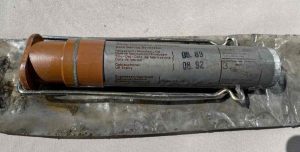
Flares are used as a distress signal to indicate that help is needed and to show your boat’s location to a search vessel. Flares must be replaced before the expiry date. If you have an expired flare, you can provide it to a suitably equipped police station, licensed to accept expired flares.
Most new flares have a useful life of 3 years from manufacture, which is clearly labelled on each individual flare.
Remember flares contain a small charge and can cause injury if misused, so handle them with care. Always keep them out of reach of small children and store them in a waterproof container.
If you are unsure what flares you need for the type of vessel you are operating check out the safety equipment checker tool.
Which lifejacket do you need?
Enjoy the waterways safely this winter by having the right life jacket on board.
Ensuring your life jacket fits well and is properly maintained is vital.
The type of lifejacket you need and where you must wear it depend on your vessel’s type and length, your age, your operating location, and the conditions. Use the online checking tool to help you find the right life jacket.
Recently, Marine Safety Officers conducted an on-water vessel check because the occupants had failed to wear their life jackets, something the officers can detect well before you realise they are there.
Our team then informed them about the requirements for life jacket carriage, wear, and maintenance, emphasising the importance of checking it, servicing it, and wearing it.
Later that same day, the same vessel was intercepted for a second time. Unfortunately, both the operator and the passenger had failed to wear their life jackets again!
While community education and compliance work together, there are no excuses when it comes to not wearing your life jacket a second time, especially on the same day!
You risk more than an expiation (or two in this operator’s case) by not wearing a lifejacket. Give yourself the best opportunity to get home safely by wearing your life jacket when out on the water.
Your NEW Marine Safety online store
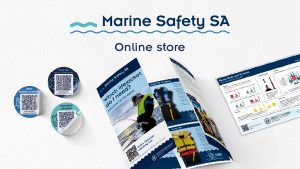
After such a fantastic response from you, the boating public, Marine Safety SA has now launched a new online store for all your boating stickers and educational material.
These stickers help provide quick and easy access to safety equipment checklists and Marine Safety SA online tools, so you can access the information needed when on the water.
The following stickers are available:
- Safety equipment checklist – recreational vessels under 8 metres
- Safety equipment checklist – recreational vessels over 8 metres
- QR code to the online safety equipment checking tool
- QR code to the online which lifejacket do you need tool
- QR code to the online report an incident or hazard tool
- QR code to the Marine Safety SA Facebook page
- Buoys, marks and beacons
- VHF marine radio channel
- 27 MHz marine radio channels
- Phonetic alphabet for marine radio
Also available:
- Which lifejacket do you need? brochure
Boat retailers and other boating organisations can also now order the ‘Stay safe on the water’ posters. These posters provide QR code links to the ‘safety equipment’ and ‘which lifejacket do you need?’ checker tools. The posters provide a great opportunity to engage with your customers, club members and the boating public when discussing and choosing the right safety equipment for their needs.
Navigation lights are required between sunset and sunrise
With less daylight hours available during the winter months, it is important to understand the requirements when navigation lights are installed on your vessel. Above all, your vessel must show navigation lights between sunset and sunrise.
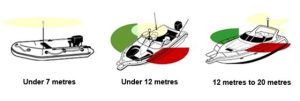
Navigation lights indicate:
- presence of a vessel
- approximate direction of travel
- type of vessel i.e. power-driven or sailing.
Requirements for vessels:
Vessel length under 7 metres and less than 7 knots:
- Must exhibit a white all round (360 degree) light and, if possible separate or combined sidelights.
Vessels under 12 metres:
- Separate or combined sidelights, a masthead light and a stern light; or
- Separate or combined sidelights and an all-round white light.
The masthead or white all-round light must be a minimum of one metre above the sidelights.
Vessels 12 metres to 20 metres:
- A masthead light, separate sidelights and stern light; or
- A masthead light, combined sidelights and stern light.
The masthead light shall be at least 2.5 metres above the gunwale. Combined sidelights shall be at least one metre below the masthead light.
Learn more about navigational lights
Know when to wear your lifejacket
Did you know that in vessels over 4.8 metres there are times when you need to wear a lifejacket? Marine Safety Officers see this as a commonly misunderstood rule by the boating public.
When in an open area of a vessel and during times of heightened risk, life jackets must be worn.
Circumstances of heightened risk are:
- when operating alone
- when operating only accompanied by a child, or children, who is 12 years old or younger
- when operating after sunset or before sunrise
- when the boat is disabled
- when crossing an ocean bar
- at times of restricted visibility
- when in an area subject to a gale, storm force, hurricane-force wind, severe thunderstorm, or severe weather warning issued by the BOM.
Learn which lifejacket you require for your area of operation.
Stay safe on the water.





